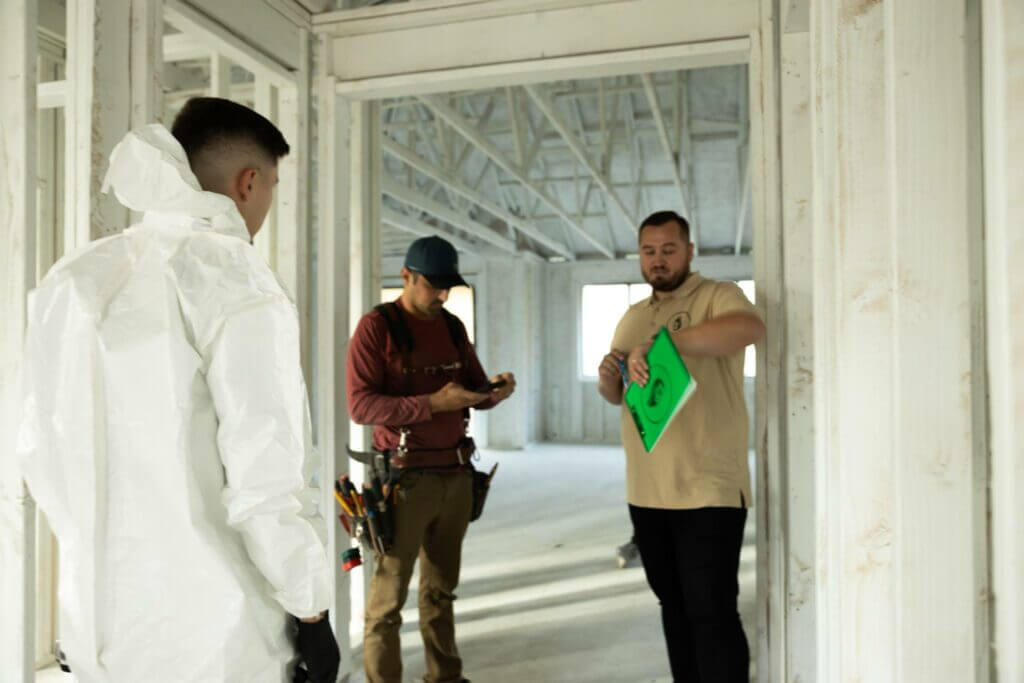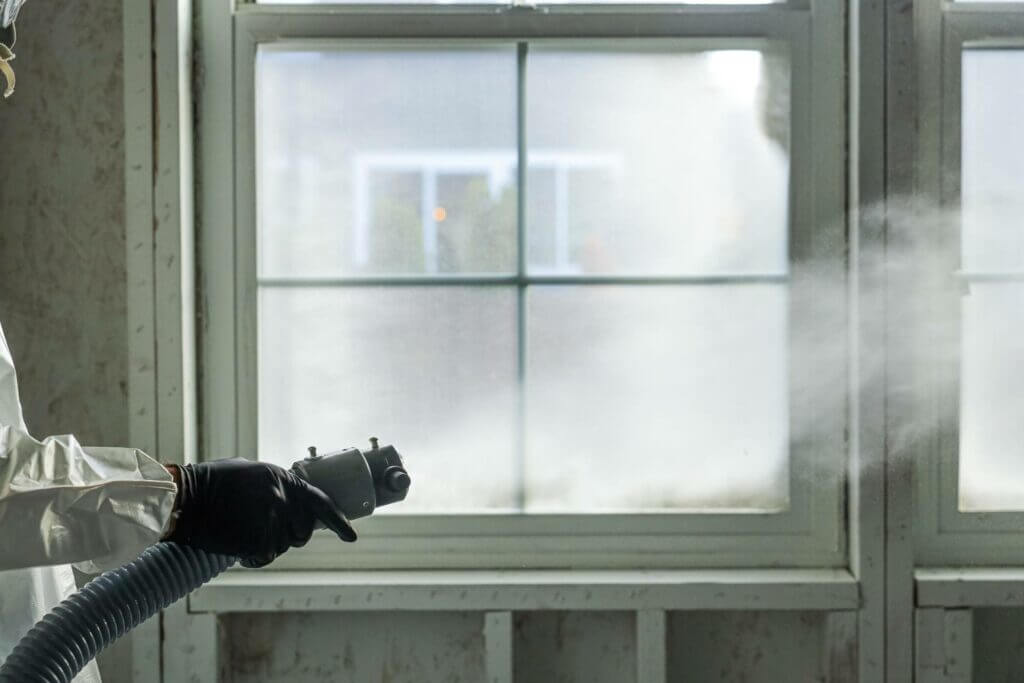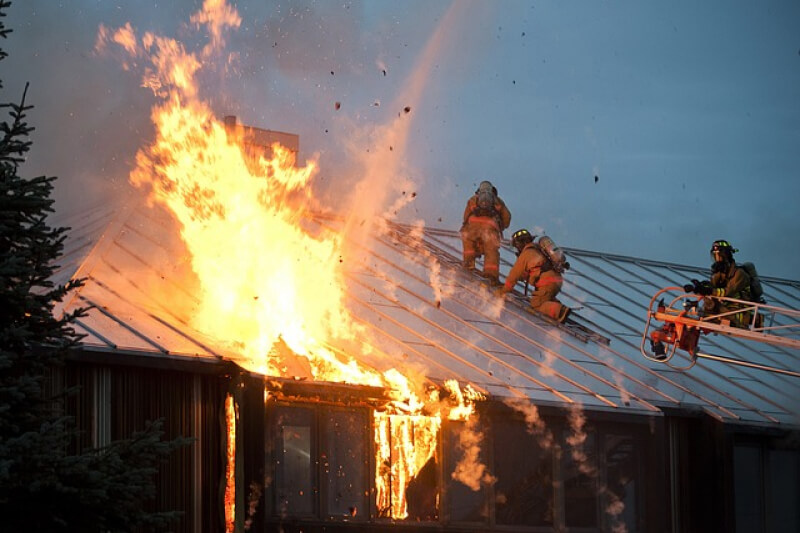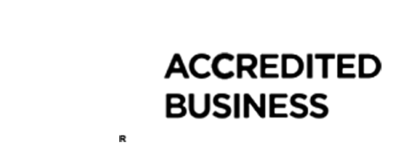“Getting a Mortgage on a Fire Damaged Property: Unlocking the Potential”
Purchasing a property damaged by fire can be a lucrative opportunity for real estate investors or homeowners seeking a unique project. However, securing financing for such properties might seem daunting. But fear not, as this article delves into the intricacies of obtaining a mortgage on a fire damage property, providing you with the guidance needed to navigate this process successfully.


Definition of a fire-damaged property
A fire-damaged property refers to real estate that has suffered harm from fire incidents, resulting in a spectrum of damage from minor cosmetic changes to severe structural issues, affecting both its value and safety. The extent of damage can vary widely, but it invariably impacts the property’s overall condition and marketability.
Importance of mortgages in property ownership
Mortgages play a pivotal role in property ownership by providing individuals with the financial means to purchase real estate. They enable buyers to spread the cost of a property over time, making homeownership accessible to a broader demographic. Mortgages also serve as a form of investment, as property values typically appreciate over time, allowing homeowners to build equity.
Can You Get a Mortgage on a Fire Damaged Property?
One of the primary concerns when considering buying a fire-damaged property is whether you can secure a mortgage for it. The answer? Yes, it’s possible! Lenders do offer mortgages for fire-damaged properties, but there are several factors to consider.
Understanding Lenders’ Criteria
Lenders have specific criteria when it comes to providing mortgages for fire damaged properties. These criteria may include:
- Extent of Damage: Lenders assess the extent of the fire damage to determine the property’s viability for financing.
- Insurance Coverage: They may inquire about the insurance coverage on the property to ensure adequate protection against future risks.
- Rehabilitation Plans: Lenders might require a detailed plan for rehabilitating the property to ensure it meets safety and habitability standards.
Factors influencing mortgage approval on fire-damaged properties
Extent of damage
The severity of fire damage plays a crucial role in the mortgage approval process, as lenders evaluate it to gauge the property’s collateral value. Extensive damage raises concerns about the property’s ability to serve as adequate security, potentially resulting in loan denial or more stringent borrowing conditions. Assessing the extent of damage allows lenders to make informed decisions regarding risk management and loan terms.
Insurance coverage
Sufficient insurance coverage is vital for mortgage approval as it helps mitigate risks, particularly related to fire damage. Lenders require assurance that the property is adequately protected, as inadequate insurance could expose them to financial liabilities. Therefore, having comprehensive insurance coverage is essential to smooth the mortgage approval process and ensure both the lender’s and borrower’s interests are safeguarded.
Appraised value post-repair
Lenders assess a property’s post-repair appraised value to determine its suitability as collateral for a mortgage. This evaluation ensures that the projected value aligns with the requested loan amount, taking into account repair expenses, prevailing market conditions, and potential future appreciation. By considering these factors, lenders mitigate risk and ensure that the property adequately secures the loan.


Assessing Property Eligibility
Not all fire damaged properties qualify for conventional mortgages. Understanding the eligibility criteria is crucial before proceeding with your mortgage application.
Property Inspection
Before granting a mortgage, lenders usually demand a comprehensive inspection of the fire-damaged property to gauge the severity of the damage and determine the property’s overall state. This inspection serves to ascertain the extent of repairs needed and assess the property’s value post-restoration, providing vital information for the lending decision. By conducting such inspections, lenders mitigate risks associated with potential property devaluation or safety concerns due to fire damage.
Insurance Requirements
Securing insurance is crucial for obtaining a mortgage on a fire-damaged property, as it provides financial protection for both the homeowner and the lender. Lenders typically mandate sufficient insurance coverage to mitigate their risk and safeguard their investment against potential future incidents. Adequate insurance not only protects the property but also ensures that the lender’s interests are safeguarded in the event of any unforeseen damage or liabilities.
Challenges in securing a mortgage on fire-damaged properties
Risk assessment by lenders
Lenders conduct thorough risk assessments before approving mortgages on fire-damaged properties. Higher risks associated with potential damages or marketability issues may result in loan denials or stricter terms.
Limited financing options
Securing financing for fire-damaged properties can be challenging due to limited options. Traditional lenders may be hesitant to extend loans, leading buyers to explore alternative financing avenues.
Higher interest rates or stricter terms
Lenders may impose higher interest rates or stricter terms on mortgages for fire-damaged properties to offset risks. Buyers should be prepared for potentially unfavorable loan conditions compared to standard property purchases.
Steps to Obtain a Mortgage on a Fire Damaged Property
Now that you understand the basics, let’s explore the steps involved in obtaining a mortgage for a fire damaged property:
Step 1: Research Lenders
When seeking lenders specializing in financing for fire-damaged properties, it’s crucial to explore institutions with a track record in handling such cases. Start by researching banks, credit unions, and private lenders known for their expertise in navigating the unique challenges associated with fire-damaged properties. Look for lenders who offer tailored solutions, flexible terms, and a thorough understanding of the insurance and rehabilitation processes involved in restoring such properties.
Step 2: Gather Documentation
Please provide all relevant documentation, such as property inspection reports, insurance information, and rehabilitation plans. This will help ensure a thorough understanding of the property’s condition, coverage, and any necessary repairs or improvements. Gathering these documents will streamline the process and facilitate informed decision-making regarding the property.
Step 3: Submit Application
Please ensure you complete your mortgage application form accurately and attach all necessary documentation requested by your chosen lender. This typically includes proof of income, identification documents, and details about the property you intend to purchase. Submitting these materials promptly will expedite the approval process and help secure your desired mortgage terms.
Step 4: Await Approval
After submitting your application, you must patiently await approval from the lender, which may take some time. During this period, the lender will assess the property and review your application thoroughly. It’s essential to remain patient and prepared for any additional information or documentation requests from the lender during this process.
Step 5: Close the Deal
After receiving approval, collaborate with your lender to iron out the details of the mortgage agreement. Ensure that both parties thoroughly understand and agree upon all terms before closing the deal. Finalize the necessary paperwork and fulfill any remaining requirements to seal the mortgage transaction officially.


Alternative financing options for fire-damaged properties
Specialized lenders or programs
Explore specialized lenders or programs that cater to financing fire-damaged properties. These entities may have a deeper understanding of the unique challenges associated with such properties and offer more flexible loan options.
Government assistance or grants
Investigate government assistance programs or grants available for repairing fire-damaged properties. These resources can provide financial support or incentives to offset repair costs and facilitate mortgage approval.
Seller financing or private loans
Consider seller financing or private loans as alternative financing options. Negotiating directly with the seller or seeking private investors can offer more flexibility in terms and requirements.
Risks and considerations for buyers of fire-damaged properties
Hidden damage or unforeseen costs
Buyers should be aware of the potential for hidden damage or unforeseen costs when purchasing fire-damaged properties. Conduct thorough inspections and assessments to uncover any hidden issues before finalizing the purchase.
Insurance implications
Obtaining adequate insurance coverage for fire-damaged properties is crucial for mitigating risks. Buyers should explore insurance options tailored to their specific needs and ensure sufficient coverage to protect their investment.
Resale value and marketability
Evaluate the resale value and marketability of fire-damaged properties before making a purchase. Factors such as location, extent of damage, and local market conditions can impact the property’s potential for appreciation and resale. Buyers should consider long-term investment potential and marketability when assessing viability.
FAQs (Frequently Asked Questions)
Can I get a mortgage for a property with significant fire damage?
Yes, it’s possible to obtain a mortgage for such properties, but eligibility criteria may vary among lenders.
Do I need insurance for a fire damaged property?
Yes, most lenders require adequate insurance coverage to protect their investment.
Are there specific lenders who specialize in financing fire damaged properties?
Yes, some lenders specialize in providing mortgages for fire damaged properties. Researching and identifying these lenders is crucial.
What factors do lenders consider when assessing the eligibility of a fire damaged property for a mortgage?
Lenders typically consider the extent of the damage, insurance coverage, and rehabilitation plans when assessing property eligibility.
How long does it take to obtain approval for a mortgage on a fire damaged property?
The approval process varies depending on the lender and the complexity of the application but can take several weeks to months.
Can I rehabilitate the property myself, or do I need to hire professionals?
While DIY rehabilitation is possible, hiring professionals ensures compliance with safety and building codes, which lenders often require.
Conclusion
Securing a mortgage for a fire-damaged property is indeed possible with careful planning and execution. By comprehending lenders’ requirements, evaluating the property’s eligibility for financing, and undertaking necessary renovations or repairs, you can enhance its appeal to potential lenders. With a strategic approach and thorough preparation, fire-damaged properties can represent valuable investment opportunities or avenues for achieving homeownership.

